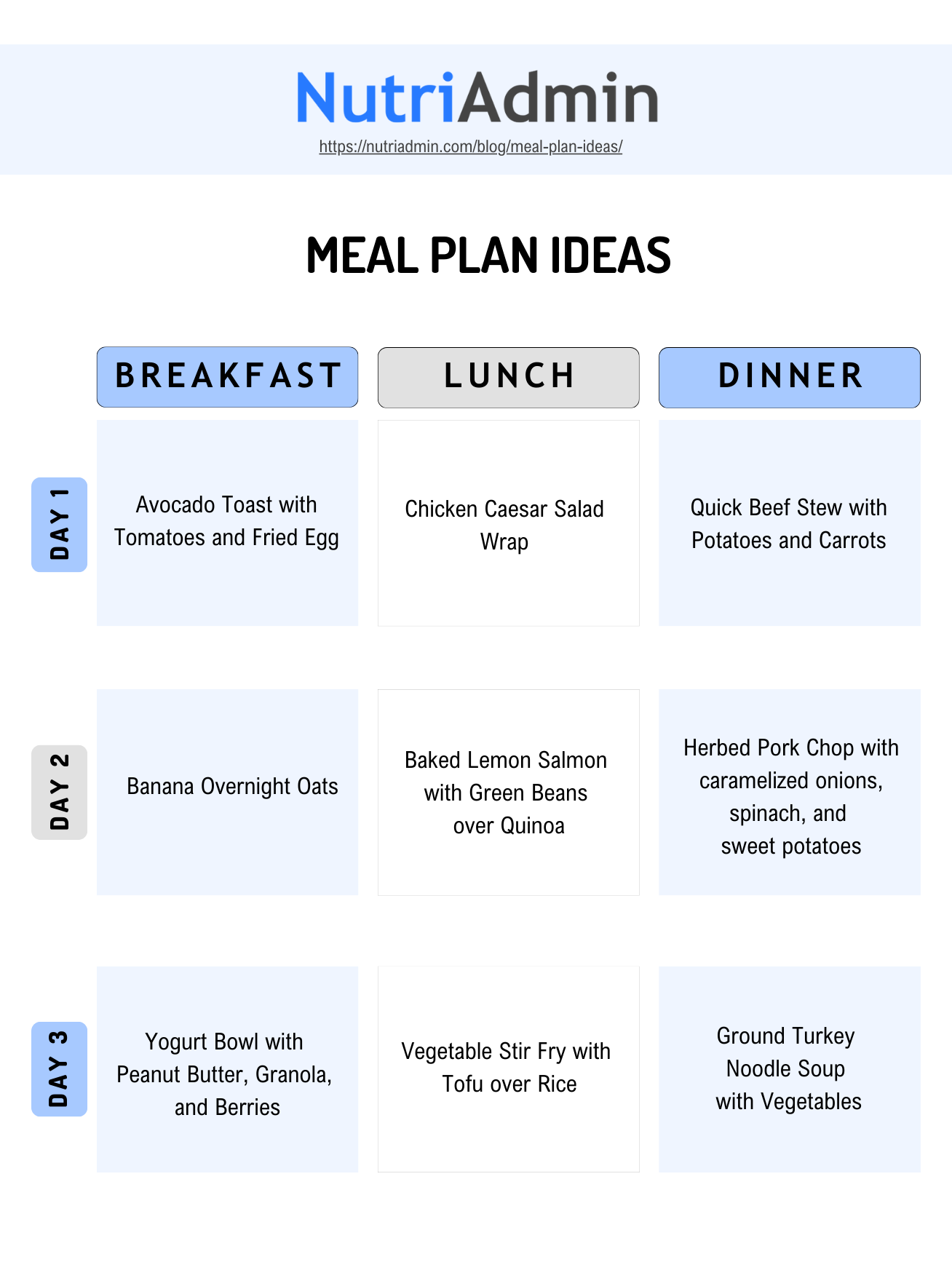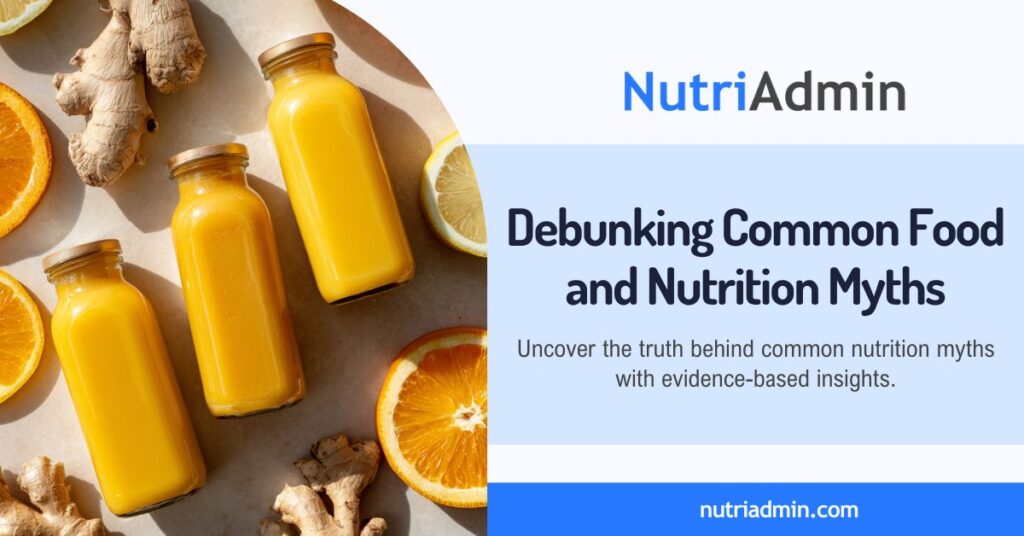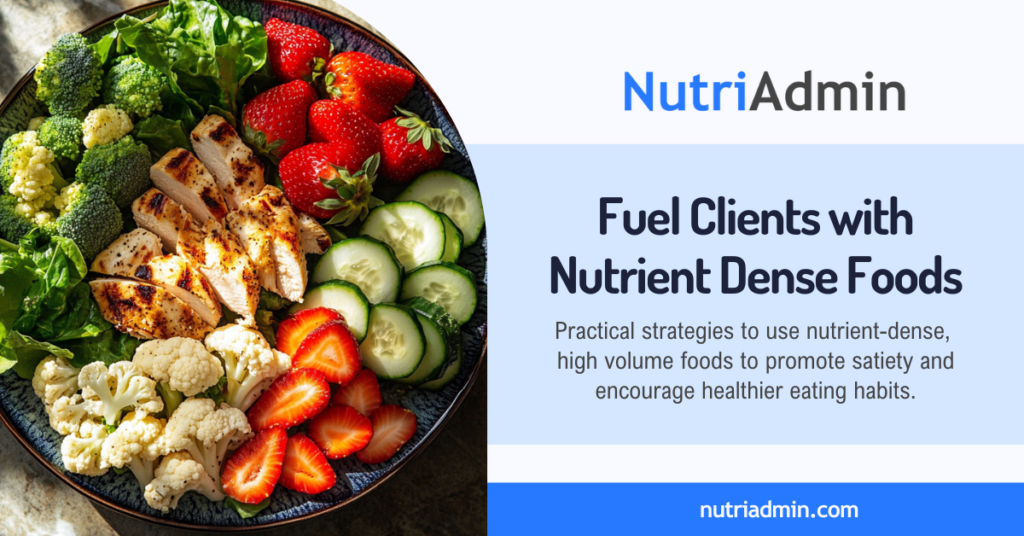Negative feedback from clients can be daunting and overwhelming. It can be even more challenging when clients fail to see progress because they cannot stick to your recommended meal plans due to their preferences or repetitive meals. It may be time to get fresh meal plan ideas. But the biggest question is: how do you find meal plan ideas? Where can you find free weekly meal plan ideas?
In this article, we will explore various options to help you discover more meal plan ideas and create more effective meal plans for your clients.
Who is this guide for?
If you are a nutritionist, dietitian, personal trainer, or health coach, this comprehensive guide will help you get more ideas for meal planning. It’s also useful for anyone who plans meals for their family, for a group of people, or even for themselves.
For simplicity and consistency, this guide will use “clients” to refer to the meal plan recipients, but other meal planners can also utilize this information.
How to get ideas for meal plans
The following are practical tips on getting ideas for creating effective meal plans for your clients.
Food Preference Questionnaire
When planning meals for clients, it’s important to take their individual food preferences into consideration. To gather this information, using a food preference questionnaire is a great way to understand what foods they enjoy and what they don’t.
By analyzing their responses, you can get ideas on what to include in their meal plans that would align with their specific likes and dislikes.
Think About the Main Ingredients
If you’re making meal plans, it’s important to consider variety in the meals you include. This helps prevent monotony and keeps clients from becoming tired of their meal plans. Additionally, one way to create variations is to consider the primary ingredients in dishes and how they can be used in different meals.
Proteins
- Pork
- Chicken
- Beef
- Turkey
- Fish
- Seafood
- Beans
- Tofu
- Tempeh
- Lentils
Carbohydrates
- Bread
- Potatoes
- Sweet Potatoes
- Rice – Brown, Rice, Red, Black
- Corn
- Tortilla
- Pita
- Quinoa
- Pasta
- Noodles
Vegetables
- Broccoli
- Spinach
- Tomato
- Brussel Sprouts
- Carrots
- Green Beans
- Peppers
- Cabbage
- Cauliflower
- Eggplant
- Lettuce
- Squash
- Cucumber
- Onions
- Radish
- Asparagus
- Zucchini
- Arugula
- Kale
- Mushroom
- Peas
- Sprouted Beans
Cuisines
If you’re looking for new ideas for your meal plans, exploring different cuisines is a great way to do so. It allows you to introduce your clients to new flavors, ingredients, and cooking methods, bringing diversity and excitement to their regular meals.
Cooking Methods
One way to come up with meal plan ideas is to consider cooking methods. To do this, you can start by organizing your meals around different cooking methods.
This approach allows you to vary the flavors and textures in your meal plan. You can also consider the time and effort required for each cooking method to ensure that the meal plan is practical for your client’s schedule.
Below is an example of a meal plan based on various ingredients and cooking methods. It’s important to note that this is just an example and may not be suitable for all clients.
The level of variation will ultimately depend on factors such as ingredient accessibility, budget, time available for cooking, and other individual preferences. To create a more personalized meal plan for each client, analyze their food diaries and preference questionnaires, and ask relevant questions during your consultations or on their nutritional assessment form.

Where can you find meal plan ideas?
There are numerous ways to find ideas for meal planning, whether through free or paid resources. You can search on the internet or browse your favorite cookbooks. You can also download free meal plan templates online, use a meal plan generator, or even hire a nutrition professional for help.

Searching the Internet
The internet is a great resource for finding free meal plan ideas. You can search for weekly meal plan ideas or recipes that you need based on your client’s needs and preferences. After that, you can compile them and incorporate them into your own meal plans for your clients.
Cookbooks and Free Databases
Using cookbooks and free databases can provide you with a wide range of ideas for meal planning.
You can start by exploring different cookbooks that focus on balanced meals. Some emphasize whole foods, specific dietary needs, or culinary traditions that align with your client’s preferences.
Additionally, leveraging free databases like Spoonacular allows you to access a vast collection of recipes with nutritional information. You can search for recipes based on specific dietary preferences and ingredient availability making it easier to tailor meal plans to your client’s individual needs.
Using ChatGPT
To quickly generate ideas, you can take advantage of AI tools like ChatGPT. These tools allow you to input prompts that are related to the idea you have in mind. It will then give you a variety of ideas based on that input. The following are example prompts that you can use to generate meal plan ideas using ChatGPT.
- Give me ideas for a meal plan for a family of four.
- Create a 1-week meal plan that only includes quick and easy meals.
- Can you suggest a dairy-free weekly meal plan for one with a budget of $100 or less?
- I need ideas for a weekly meal plan with high-protein vegan recipes.
- What are some gluten-free meal ideas for breakfast, lunch, and dinner for a week?
- Create a monthly meal plan that follows a Mediterranean diet.
- I have chicken, broccoli, spinach, carrots, peppers, and quinoa. Can you create a 3-day meal plan using these ingredients?
- Give me a meal plan idea for a week that includes only Italian cuisine.
- If you’re using GPT-4, you can upload a recipe file that you like then use the prompt, “Give me ideas for a meal plan containing this recipe or variations on this recipe”
Remember that while ChatGPT can offer meal plans, it’s important to recognize that AI may not always be completely accurate. It’s always a good practice to double-check any meal plan information it produces.
If you are an experienced cook, you may be familiar with the right amount of seasonings and the time it takes to prepare common dishes. However, if you are not very experienced, it’s advisable to try the recipes yourself to make sure that the measurements and preparation time will result in a delicious, well-cooked dish before recommending it to your clients.
Downloading Free Weekly Meal Plans
There are websites that offer free weekly meal plan templates along with recipe ideas for specific diets or cuisines. These can be used to create personalized meal plans for clients.
You can find more information in our guide to help you utilize free weekly meal plans and customize them to your client’s needs and preferences.
Learning How to Create Recipes and Meal Plans
Creating a meal plan for yourself is straightforward because you know your own preferences and dietary needs.
However, making meal plans for others is more complex. It requires careful consideration of different factors to ensure that the plan matches the needs and preferences of your clients.
In order to create an effective meal plan and have more ideas, it is important to learn how to create recipes based on your target clients. Learning how to make a meal plan properly can also help provide individualized and professional meal plans.
If you’re looking to learn for free, there are plenty of online resources that can provide you with meal planning ideas. You can also explore paid courses if you prefer.
This approach will significantly increase the likelihood of their adherence to the plan.
Hiring a Professional
One way to generate meal planning ideas is by using a paid service. If you’re a personal trainer, coach, or an individual looking to create meal plans for yourself or others, you can hire an expert in the field.
For clients with health conditions, it’s best to work with a dietitian who can prescribe appropriate diets based on their specific needs.
If you’re catering to generally healthy individuals aiming for weight loss or looking to make positive dietary changes. In that case, you can hire a nutritionist or professional cook who is knowledgeable in nutritious meals and meal preparations.
Meal Plan Generator
If you work as a nutritionist, dietitian, personal trainer, or coach, it would be beneficial to invest in meal planning software like NutriAdmin. This is especially important if you are creating multiple meal plans weekly and need more ideas quickly.
When you’re just starting out, you might not have many meal plans to create. However, as your business expands, you’ll require a tool to help you efficiently generate customized meal plans.
Although manually creating meal plans doesn’t cost anything, it is essential to assess whether it impacts other responsibilities like client care, marketing, and administrative tasks. If it consumes too much of your time, is it truly free, or does it cost you more by taking up so much of your time?
Meal Plan Ideas Based on Specific Diets
If you’re recommending specific diets to your clients, here are some practical tips on how to find inspiration for creating meal plans based on these diets.
Make a List
When creating meal plans for specific diets, it’s important to thoroughly research the list of allowed and not allowed ingredients for that particular diet. You can then compile this information into a list or spreadsheet to help you plan meals more effectively. This can also help you avoid recommending meals that contain foods that are not allowed in a specific diet.
Feel free to use the spreadsheet below to create an organized food list for the specific diets you often make meal plans for. List the foods allowed and not allowed, and then use the list to come up with meal ideas that match your criteria.
Major Food Groups
When brainstorming for weekly meal plan ideas, I like to consider the most restrictive food group in the diet and pair it with other allowed ingredients to ensure variety and balance.
For example, in a vegan diet, the most restrictive part is often the proteins, as animal products are not allowed. Start by creating a list of vegan protein sources. Next, consider which carbohydrates would complement these proteins best. Finally, choose vegetables that would pair well with your selections. Think of dishes that would match these, ideally based on the client’s favorite dishes or other easy-to-make recipes.
Another example is the diabetes diet, where it’s important to choose carbohydrates that are not classified as high glycemic index foods. Start by making a list of low to medium GI carbohydrates and then pairing them with proteins and vegetables.
The above examples are typically used for main meals, but similar ideas can also be applied to snacks. When it comes to snacks, you can opt for just one item, such as nuts or fruits. Alternatively, you can also create combinations or pairings, usually with a protein source, such as celery sticks dipped in hummus or yogurt with berries and nuts.
Repurposing Recipes
To make the most of your meal plan ideas, consider adapting your favorite recipes to accommodate different diets and add variety. This will allow you to repurpose these recipes and offer more choices to your clients.
For instance, if you have a recipe for overnight oats that is well-liked by your clients, but it requires low-fat milk. You can modify it to be vegan-friendly for your vegan clients by substituting low-fat milk with plant-based alternatives like soy milk, almond milk, oat milk, or coconut milk.
Another example would be if your client enjoyed the tofu stir-fry recipe you shared with them, you can substitute tofu with seitan, chicken breast, ground beef, or any other preferred protein. Alternatively, you can also make variations in the vegetables included in the recipe.
Keeping Track of Meal Plan Ideas
It’s important to remember that your meal plan may not be perfect the first time you create it. Even if you carefully curate it, there are other factors that may make the meal plan less desirable.
After creating your meal plans based on the ideas from this guide, it’s important to evaluate whether the recommended meals or recipes would be ideal for your client’s preferences.
Providing a feedback form with each recommended dish will help you learn which recipes your clients like and should be included next time and which ones they don’t like. This way, you can assess and improve your meal plans over time.
Some factors to consider are:
- Price: Not everyone has an unlimited budget for their meals. When coming up with meal ideas, it’s important to consider the cost of preparing a dish to ensure it’s feasible for the client. If a dish is affordable, it’s more likely that your clients will be able to make it.
- Taste: It is one of the most important factors to consider in meal plan ideas. Eating nutritious food doesn’t have to compromise taste. By knowing which recipes fall short in taste, you can assess possible problems and improve your recipes.
- Difficulty: If a recipe is too complicated for the client to make, they may choose alternatives outside of your suggested plan.
- Nutrition Content: This part is where a nutritional analysis tool would be helpful. It is important to make sure your recipes are nutritionally balanced and would align with your client’s needs.
You can use the free downloadable template below as a feedback form to track your client’s feedback on your meal plan ideas.





